FORT IRWIN, Calif. — A dark, empty conference room at Fort Irwin’s National Training Center suddenly illuminates as Brig. Gen. John Stanley, deputy commanding general, 75th U.S. Army Reserve Innovation Command, enters and calls on all Soldiers wearing the 75th patch to huddle around him and his command staff.
“Project Convergence is our culminating event,” Stanley said to the handpicked Soldiers for this cutting-edge exercise. “You are the connective tissue between the Army and its DOD partners … You will add value to the Army’s Transformation Enterprise by identifying practical solutions to novel ideas that will codify future military doctrine.”
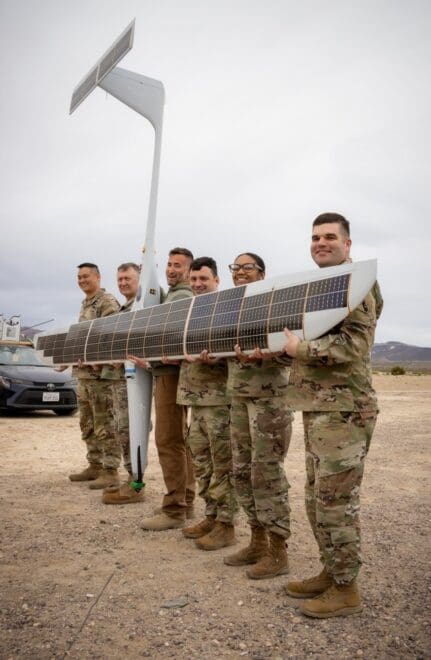
The nods from the warfighters gathered in the drab workspace silently affirmed that they were already putting Stanley’s words into practice.
In early March, approximately 40 Soldiers from the 75th USARIC joined forces with various Army commands and defense contractors in the deserts of Fort Irwin to assess and enhance emerging technologies during Project Convergence Capstone 4. This U.S. Army-hosted experiment encouraged service members from all U.S. military branches and allied nations to forge the future of warfare from the tactical to the strategic level.
“PC-C4 thrusts frontier technology into realistic scenarios that the Army might face against ever-evolving adversaries,” said Stanley, who was recently promoted in February. “The 75th USARIC helps our partners refine their systems and equipment by applying our military experience and civilian expertise.”
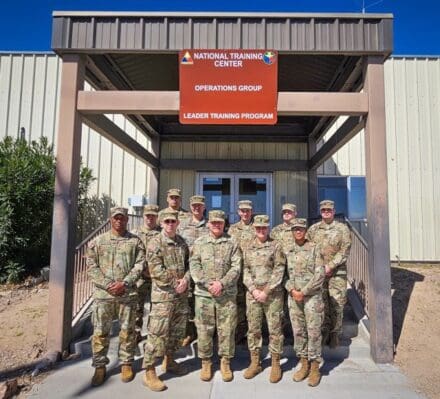
The 75th USARIC stands out among other Army Reserve commands through its unique mission set that demands highly skilled Soldiers who are leaders in their area of expertise. As part of the Army’s Transformation Enterprise, the 75th USARIC provides specialized capabilities to solve the Army’s toughest problems. Its ranks comprise seasoned professionals specializing in robotics, biotechnology, project management, cyber security, machine learning, and other advanced fields. Divided into two groups and 16 detachments, this two-star command has approximately 500 Soldiers, with many currently working for Fortune 500 companies at the management or executive level. Some are founders of their own tech start-up firms. About one out of five Soldiers in the 75th USARIC has a doctorate, with many more holding master’s degrees and IT certifications.
“Members of the 75th readily translate complex discussions among scientists, engineers and Soldiers on the ground,” said Lt. Col. Andrew Miller, innovation officer with Support Group, 75th USARIC. “We assess network issues and technical challenges in the design phase, then integrate solutions to help teams better perform in the execution phase.”
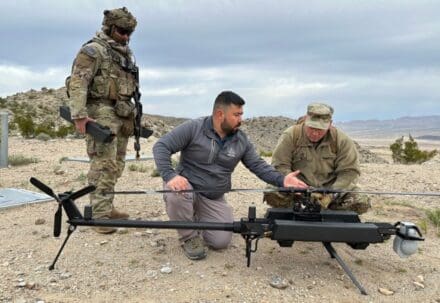
In his civilian capacity, Miller has served as a project manager at one of the world’s leading companies in software, hardware and cloud services. His corporate background helped secure a leading role in 75th’s partnership with the Army Research Laboratory’s Deep Autonomous Reconnaissance & Targeting Sensing program. DARTS integrates sensing and automation technology to produce accurate target information. Miller and several 75th USARIC Soldiers collaborated alongside the DARTS development team throughout PC-C4 to see firsthand how the system would perform in a simulated, battlefield scenario.
“Having the 75th at PC-C4 to support this program is incredibly beneficial,” said Jeffrey Houser, lead research scientist DARTS. “Army Research Laboratory has many scientists and engineers who are very good at creating cutting-edge technology for our troops. However, we sometimes struggle with communicating to our end users how to take full advantage of these advanced systems. The 75th Soldiers here not only speak the language of those in Army operations, but they also ask questions and make recommendations that my team wouldn’t have otherwise considered.”
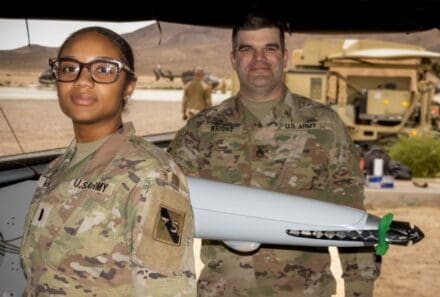
These inquisitive innovators expanded their services to Future Vertical Lift, a key priority in the Army Transformational Enterprise. The FVL Cross Functional Team aims to modernize Army aviation by improving speed, range and coordination to take decisive action in various operational environments. Programs that fall under FVL-CFT’s scope include advanced rotorcraft, unmanned aerial vehicles, and even autonomous helicopters.
A pair of 75th USARIC Soldiers from the Command’s Huntsville detachment proactively inserted themselves with the design team for the K1000ULE, an ultra-long endurance unmanned aerial system led by Kraus Hamdani Aerospace.
“The first and maybe most important step we took during Project Convergence was to develop close relationships through face-to-face conversations,” said 1st Lt. Omega Marks, innovation officer, 75th USARIC. “By joining these technical discussions, we gained a deeper understanding of the [K1000ULE] contributions to Future Vertical Lift, and we proved to the [Kraus Hamdani] Aerospace team that the 75th can enhance the K1000ULE’s capabilities by identifying potential issues and offering viable solutions.”
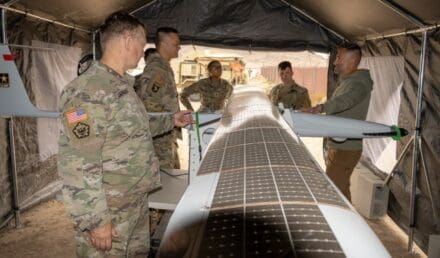
Marks, who also serves as a cyber security assessor for a company contracted by the U.S. State Department, joined her enlisted counterpart, Staff Sgt. Christopher Wright, noncommissioned officer-in-charge, Huntsville Detachment, 75th USARIC, to help enhance the K1000ULE’s capabilities.
“Many of the 11 distinct types of technology we saw [at PC-C4] greatly benefited from a thorough analysis of potential cyber threats,” said Wright, who works as a senior security engineer for a Fortune 100 company. Our inclusion in matters of surveillance, networking and electronic countermeasures addressed issues that could compromise performance or, worse, enable our adversaries to exploit our technology against us.”
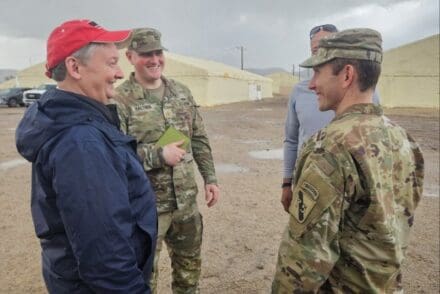
While most 75th USARIC Soldiers at Fort Irwin stormed PC-C4 with innovative solutions at the tactical, operational and strategic level, one fostered a climate of transformation along the spiritual plane.
The 75th USARIC’s command chaplain, Col. (Chaplain) Ken Harris initially came to Fort Irwin to provide religious support for fellow 75th Soldiers. His invitation to attend the garrison’s chapel services, seek guidance through prayer or request spiritual counseling captured attracted both service members and civilians hailing from France, Japan, Canada, Australia, New Zealand and the United States.

“I was blessed to pray alongside Soldiers from allied nations for their work in protecting freedom – including freedom of religion – around the world,” said Harris, a Lutheran pastor and an associate for a Fortune 500 financial services company. “Peace can be made through strength. Strength can be enhanced by interoperability of advanced technology … Peace through strength is also forged through enhancing relationships with our brothers- and sisters-in-arms.”
Stanley and the command team believe that cultivating these relationships will redefine the 75th USARIC’s role in ensuring the Army dominates every battlespace against any adversary.
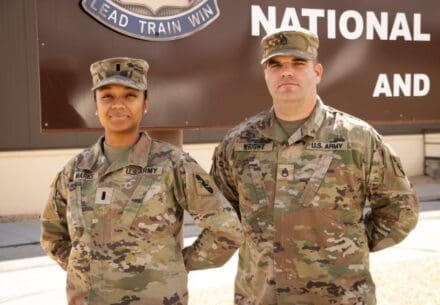
“The 75th earned its place at Project Convergence by identifying solutions that improve processes across multiple domains,” said Stanley. “Who we engage and how we help them accomplish their objectives at PC-C4 will pave the way for future 75th USARIC missions that will deliver Army of 2030 and design the Army of 2040.”
By SFC John Carkeet

